Retroreflecting Hollow Roof Prism Mirrors
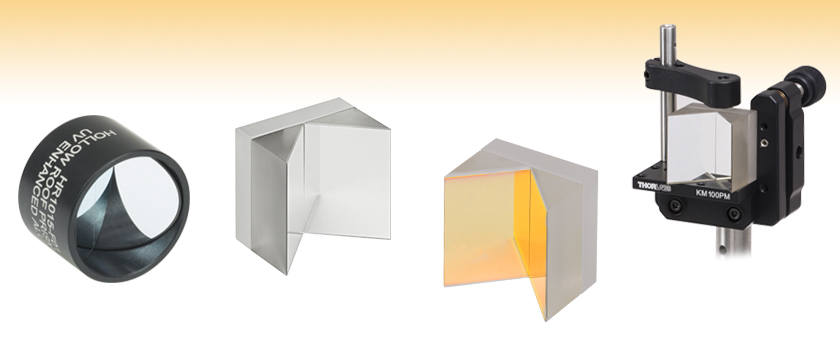
- 180° Retroreflector
- High Reflectance in the UV, Visible, or IR Wavelength Ranges
- Round and Square Versions Available
HR1015-F01
UV Enhanced Aluminum
HRS1015-M01
Protected Gold
Application Idea
HRS1015-P01 Prism Mirror Mounted Using a KM100PM Kinematic Prism Mount and PM4 Clamping Arm
HRS1015-AG
Ultrafast-Enhanced Silver

Please Wait
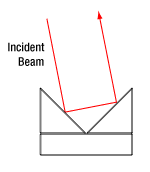
Click to Enlarge
180° Reflection is Achieved If the Incoming Light Is Orthogonal to the Dihedral Line (Roof Joint)
Features
- Two Right-Angle Prism Mirrors with Reflective Coating on Hypotenuses
- Six Metallic Coatings Available: UV Enhanced Aluminum, Protected Aluminum, Protected Silver, Ultrafast-Enhanced Silver, Protected Gold, and Unprotected Gold
- Fabricated from UV Fused Silica Substrate
- 90° ± 10 arcsec Dihedral Angle
Thorlabs' Hollow Roof Prism Mirrors are constructed using two UV fused silica right-angle prism mirrors that have a protected aluminum, UV enhanced aluminum, protected silver, ultrafast-enhanced silver, protected gold, or unprotected gold reflective coating on their hypotenuses. The resulting dihedral angle between the two coated surfaces is 90° ± 10 arcsec. We offer square, unmounted hollow roof prism mirrors with a 1.00" x 1.00" substrate dimension, and round, Ø0.89" prism mirrors pre-mounted in a Ø1" aluminum housing.
These hollow roof prism mirrors are designed to reflect light that is externally incident on the hypotenuse of the prisms. They are ideal for use as retroreflectors in applications where refraction, chromatic aberrations, material absorption, or front surface reflections from standard prisms are undesirable. Examples of such applications are interferometry or setting up optical delay lines. The incoming light is reflected at 180° when the beam travels in the plane orthogonal to the dihedral line of the mirrors (the line where the mirrors meet at 90°).
| Common Specifications | |
|---|---|
| Surface Quality (Coated Surface) | 40-20 Scratch Dig |
| Surface Flatness | <λ/4 at 633 nm (Peak to Valley) |
| Reflected Wavefront Error | <λ/2 at 633 nm (Peak to Valley) |
| Substrate | UV Fused Silicaa |
| Dihedral Angle Accuracy | ±10 arcsec |
| Specifications | Square Unmounted Prism Mirrors | Round Mounted Prism Mirrors |
|---|---|---|
| Housing Dimensions | N/A | Ø1" x 0.68" |
| Substrate Dimensions | 1.00" x 1.00" (25.4 mm x 25.4 mm) | Ø0.89" (22.6 mm) |
| Mirror Face Dimensions (Two Places) |
1.00" x 0.71" (25.4 mm x 18.03 mm) | - |
| Dimensional Tolerance | ±0.2 mm | +0.000" / -0.002" (+0.00 mm / -0.05 mm)a |
| Clear Apertureb | >80% of Face Dimensions | >Ø18.0 mm |
| Coating Specifications | ||||||
|---|---|---|---|---|---|---|
| Coating Designation (Item # Suffix) |
-F01 | -G01 | -P01 | -AG | -M01 | -M03 |
| Coating | UV Enhanced Aluminum | Protected Aluminum | Protected Silver | Ultrafast-Enhanced Silver | Protected Gold | Unprotected Golda |
| Reflectance (Click for Plot)b |
Ravg > 90% (250 to 450 nm) | Ravg > 90% (450 nm - 2 µm) Ravg > 95% (2 µm - 20 µm) |
Ravg > 97% (450 nm - 2 µm) Ravg > 95% (2 µm - 20 µm) |
Rs > 99.0% (750 nm - 1 µm) Rp > 98.5% (750 nm - 1 µm) |
Ravg > 96% (800 nm - 20 µm) |
Ravg > 97% (800 nm - 20 μm) |
| Group Delay Dispersion |
- | S-Pol: <|40 fs2| P-Pol: <|60 fs2| |
- | |||
| AOI Relative to Coated Face |
0° to 45° | 45° | 0° to 45° | |||
| Damage Threshold (Pulsed) |
0.25 J/cm2 (266 nm, 10 ns, 10 Hz, Ø0.150 mm) 0.3 J/cm2 (355 nm, 10 ns, 10 Hz, Ø0.381 mm) |
0.3 J/cm2 (1064 nm, 10 ns, 10 Hz, Ø1.000 mm) |
0.225 J/cm2 (800 nm, 99 fs, 1 kHz, Ø0.167 mm) 1 J/cm2 (1064 nm, 10 ns, 10 Hz, Ø1.010 mm) |
0.18 J/cm2 (800 nm, 52 fs FWHM, S-Pol, 1000 Pulses)c 0.39 J/cm2 (800 nm, 52 fs FWHM, S-Pol, 1 Pulse)c |
2 J/cm2 (1064 nm, 10 ns, 10 Hz, Ø1.000 mm) |
- |
| Damage Threshold (CW)d |
300 W/cm (1.064 µm, Ø0.044 mm) 500 W/cm (10.6 µm, Ø0.339 mm) |
100 W/cm (1.070 µm, Ø0.098 mm) 350 W/cm (10.6 µm, Ø0.339 mm) |
500 W/cm (1.070 µm, Ø0.974 mm) 1500 W/cm (10.6 µm, Ø0.339 mm) |
- | 500 W/cm (1.070 µm, Ø0.089 mm) 750 W/cm (10.6 µm, Ø0.339 mm) |
- |
The shaded regions in the graphs denote the ranges over which we guarantee the specified reflectance or dispersion. Please note that the reflectance outside of these bands is typical and can vary from lot to lot, especially in out-of-band regions where the reflectance is fluctuating or sloped.
UV-Enhanced Aluminum Coating (250 nm - 450 nm)
Protected Aluminum Coating (450 nm - 20 µm)
Protected Silver Coating (450 nm - 20 µm)
Ultrafast-Enhanced Silver Coating (750 nm - 1 µm)
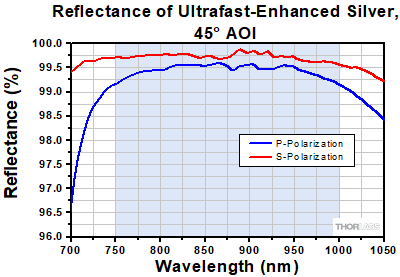
Click to Enlarge
Click for Raw Data from 649 - 1075 nm
Measured Reflectance of Our Ultrafast-Enhanced Silver
Coating as a Function of Wavelength
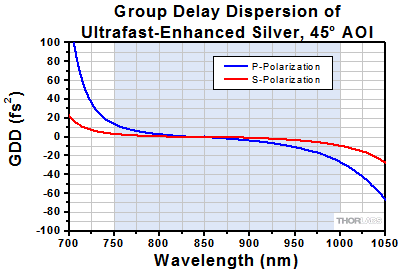
Click to Enlarge
Click for Raw Data from 649 - 1075 nm
Theoretically Calculated Group Delay Dispersion (GDD) for a Single Surface
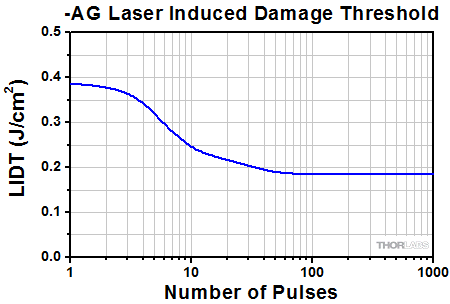
Click to Enlarge
The laser induced damage threshold (LIDT) value of an ultrafast optic is defined as the fluence (per pulse) that produces visible damage after a given number of pulses. These LIDT values were measured with 52 fs FWHM pulses at 800 nm that were s-polarized and incident at 45°.
Protected Gold Coating (800 nm - 20 µm)
Unprotected Gold Coating (800 nm - 20 µm)
| Damage Threshold Specifications | ||
|---|---|---|
| Coating Designation (Item # Suffix) |
Type | Damage Threshold |
| -F01 | Pulsed | 0.25 J/cm2 (266 nm, 10 ns, 10 Hz, Ø0.150 mm) 0.3 J/cm2 (355 nm, 10 ns, 10 Hz, Ø0.381 mm) |
| CWa | 300 W/cm (1064 nm, Ø0.044 mm) 500 W/cm (10.6 µm, Ø0.339 mm) |
|
| -G01 | Pulsed | 0.3 J/cm2 (1064 nm, 10 ns, 10 Hz, Ø1.000 mm) |
| CWa | 100 W/cm (1070 nm, Ø0.098 mm) |
|
| -P01 | Pulsed | 0.225 J/cm2 (800 nm, 99 fs, 1 kHz, Ø0.167 mm) 1 J/cm2 (1064 nm, 10 ns, 10 Hz, Ø1.010 mm) |
| CWa | 500 W/cm (1070 nm, Ø0.974 mm) 1500 W/cm (10.6 µm, Ø0.339 mm) |
|
| -AG | Pulsedb | 0.18 J/cm2 (800 nm, 52 fs FWHM, S-Pol, 1000 Pulses) 0.39 J/cm2 (800 nm, 52 fs FWHM, S-Pol, 1 Pulse) |
| CWa | - | |
| -M01 | Pulsed | 2 J/cm2 (1064 nm, 10 ns, 10 Hz, Ø1.000 mm) |
| CWa | 500 W/cm (1070 nm, Ø0.089 mm) 750 W/cm (10.6 µm, Ø0.339 mm) |
|
Damage Threshold Data for Thorlabs' Hollow Roof Prism Mirrors
The specifications to the right are measured data for Thorlabs' Hollow Roof Prism Mirrors. Damage threshold specifications are constant for a given coating type, regardless of the size of the mirror.
Laser Induced Damage Threshold Tutorial
The following is a general overview of how laser induced damage thresholds are measured and how the values may be utilized in determining the appropriateness of an optic for a given application. When choosing optics, it is important to understand the Laser Induced Damage Threshold (LIDT) of the optics being used. The LIDT for an optic greatly depends on the type of laser you are using. Continuous wave (CW) lasers typically cause damage from thermal effects (absorption either in the coating or in the substrate). Pulsed lasers, on the other hand, often strip electrons from the lattice structure of an optic before causing thermal damage. Note that the guideline presented here assumes room temperature operation and optics in new condition (i.e., within scratch-dig spec, surface free of contamination, etc.). Because dust or other particles on the surface of an optic can cause damage at lower thresholds, we recommend keeping surfaces clean and free of debris. For more information on cleaning optics, please see our Optics Cleaning tutorial.
Testing Method
Thorlabs' LIDT testing is done in compliance with ISO/DIS 11254 and ISO 21254 specifications.
First, a low-power/energy beam is directed to the optic under test. The optic is exposed in 10 locations to this laser beam for 30 seconds (CW) or for a number of pulses (pulse repetition frequency specified). After exposure, the optic is examined by a microscope (~100X magnification) for any visible damage. The number of locations that are damaged at a particular power/energy level is recorded. Next, the power/energy is either increased or decreased and the optic is exposed at 10 new locations. This process is repeated until damage is observed. The damage threshold is then assigned to be the highest power/energy that the optic can withstand without causing damage. A histogram such as that below represents the testing of one BB1-E02 mirror.

The photograph above is a protected aluminum-coated mirror after LIDT testing. In this particular test, it handled 0.43 J/cm2 (1064 nm, 10 ns pulse, 10 Hz, Ø1.000 mm) before damage.

| Example Test Data | |||
|---|---|---|---|
| Fluence | # of Tested Locations | Locations with Damage | Locations Without Damage |
| 1.50 J/cm2 | 10 | 0 | 10 |
| 1.75 J/cm2 | 10 | 0 | 10 |
| 2.00 J/cm2 | 10 | 0 | 10 |
| 2.25 J/cm2 | 10 | 1 | 9 |
| 3.00 J/cm2 | 10 | 1 | 9 |
| 5.00 J/cm2 | 10 | 9 | 1 |
According to the test, the damage threshold of the mirror was 2.00 J/cm2 (532 nm, 10 ns pulse, 10 Hz, Ø0.803 mm). Please keep in mind that these tests are performed on clean optics, as dirt and contamination can significantly lower the damage threshold of a component. While the test results are only representative of one coating run, Thorlabs specifies damage threshold values that account for coating variances.
Continuous Wave and Long-Pulse Lasers
When an optic is damaged by a continuous wave (CW) laser, it is usually due to the melting of the surface as a result of absorbing the laser's energy or damage to the optical coating (antireflection) [1]. Pulsed lasers with pulse lengths longer than 1 µs can be treated as CW lasers for LIDT discussions.
When pulse lengths are between 1 ns and 1 µs, laser-induced damage can occur either because of absorption or a dielectric breakdown (therefore, a user must check both CW and pulsed LIDT). Absorption is either due to an intrinsic property of the optic or due to surface irregularities; thus LIDT values are only valid for optics meeting or exceeding the surface quality specifications given by a manufacturer. While many optics can handle high power CW lasers, cemented (e.g., achromatic doublets) or highly absorptive (e.g., ND filters) optics tend to have lower CW damage thresholds. These lower thresholds are due to absorption or scattering in the cement or metal coating.

LIDT in linear power density vs. pulse length and spot size. For long pulses to CW, linear power density becomes a constant with spot size. This graph was obtained from [1].

Pulsed lasers with high pulse repetition frequencies (PRF) may behave similarly to CW beams. Unfortunately, this is highly dependent on factors such as absorption and thermal diffusivity, so there is no reliable method for determining when a high PRF laser will damage an optic due to thermal effects. For beams with a high PRF both the average and peak powers must be compared to the equivalent CW power. Additionally, for highly transparent materials, there is little to no drop in the LIDT with increasing PRF.
In order to use the specified CW damage threshold of an optic, it is necessary to know the following:
- Wavelength of your laser
- Beam diameter of your beam (1/e2)
- Approximate intensity profile of your beam (e.g., Gaussian)
- Linear power density of your beam (total power divided by 1/e2 beam diameter)
Thorlabs expresses LIDT for CW lasers as a linear power density measured in W/cm. In this regime, the LIDT given as a linear power density can be applied to any beam diameter; one does not need to compute an adjusted LIDT to adjust for changes in spot size, as demonstrated by the graph to the right. Average linear power density can be calculated using the equation below.

The calculation above assumes a uniform beam intensity profile. You must now consider hotspots in the beam or other non-uniform intensity profiles and roughly calculate a maximum power density. For reference, a Gaussian beam typically has a maximum power density that is twice that of the uniform beam (see lower right).
Now compare the maximum power density to that which is specified as the LIDT for the optic. If the optic was tested at a wavelength other than your operating wavelength, the damage threshold must be scaled appropriately. A good rule of thumb is that the damage threshold has a linear relationship with wavelength such that as you move to shorter wavelengths, the damage threshold decreases (i.e., a LIDT of 10 W/cm at 1310 nm scales to 5 W/cm at 655 nm):

While this rule of thumb provides a general trend, it is not a quantitative analysis of LIDT vs wavelength. In CW applications, for instance, damage scales more strongly with absorption in the coating and substrate, which does not necessarily scale well with wavelength. While the above procedure provides a good rule of thumb for LIDT values, please contact Tech Support if your wavelength is different from the specified LIDT wavelength. If your power density is less than the adjusted LIDT of the optic, then the optic should work for your application.
Please note that we have a buffer built in between the specified damage thresholds online and the tests which we have done, which accommodates variation between batches. Upon request, we can provide individual test information and a testing certificate. The damage analysis will be carried out on a similar optic (customer's optic will not be damaged). Testing may result in additional costs or lead times. Contact Tech Support for more information.
Pulsed Lasers
As previously stated, pulsed lasers typically induce a different type of damage to the optic than CW lasers. Pulsed lasers often do not heat the optic enough to damage it; instead, pulsed lasers produce strong electric fields capable of inducing dielectric breakdown in the material. Unfortunately, it can be very difficult to compare the LIDT specification of an optic to your laser. There are multiple regimes in which a pulsed laser can damage an optic and this is based on the laser's pulse length. The highlighted columns in the table below outline the relevant pulse lengths for our specified LIDT values.
Pulses shorter than 10-9 s cannot be compared to our specified LIDT values with much reliability. In this ultra-short-pulse regime various mechanics, such as multiphoton-avalanche ionization, take over as the predominate damage mechanism [2]. In contrast, pulses between 10-7 s and 10-4 s may cause damage to an optic either because of dielectric breakdown or thermal effects. This means that both CW and pulsed damage thresholds must be compared to the laser beam to determine whether the optic is suitable for your application.
| Pulse Duration | t < 10-9 s | 10-9 < t < 10-7 s | 10-7 < t < 10-4 s | t > 10-4 s |
|---|---|---|---|---|
| Damage Mechanism | Avalanche Ionization | Dielectric Breakdown | Dielectric Breakdown or Thermal | Thermal |
| Relevant Damage Specification | No Comparison (See Above) | Pulsed | Pulsed and CW | CW |
When comparing an LIDT specified for a pulsed laser to your laser, it is essential to know the following:

LIDT in energy density vs. pulse length and spot size. For short pulses, energy density becomes a constant with spot size. This graph was obtained from [1].
- Wavelength of your laser
- Energy density of your beam (total energy divided by 1/e2 area)
- Pulse length of your laser
- Pulse repetition frequency (prf) of your laser
- Beam diameter of your laser (1/e2 )
- Approximate intensity profile of your beam (e.g., Gaussian)
The energy density of your beam should be calculated in terms of J/cm2. The graph to the right shows why expressing the LIDT as an energy density provides the best metric for short pulse sources. In this regime, the LIDT given as an energy density can be applied to any beam diameter; one does not need to compute an adjusted LIDT to adjust for changes in spot size. This calculation assumes a uniform beam intensity profile. You must now adjust this energy density to account for hotspots or other nonuniform intensity profiles and roughly calculate a maximum energy density. For reference a Gaussian beam typically has a maximum energy density that is twice that of the 1/e2 beam.
Now compare the maximum energy density to that which is specified as the LIDT for the optic. If the optic was tested at a wavelength other than your operating wavelength, the damage threshold must be scaled appropriately [3]. A good rule of thumb is that the damage threshold has an inverse square root relationship with wavelength such that as you move to shorter wavelengths, the damage threshold decreases (i.e., a LIDT of 1 J/cm2 at 1064 nm scales to 0.7 J/cm2 at 532 nm):

You now have a wavelength-adjusted energy density, which you will use in the following step.
Beam diameter is also important to know when comparing damage thresholds. While the LIDT, when expressed in units of J/cm², scales independently of spot size; large beam sizes are more likely to illuminate a larger number of defects which can lead to greater variances in the LIDT [4]. For data presented here, a <1 mm beam size was used to measure the LIDT. For beams sizes greater than 5 mm, the LIDT (J/cm2) will not scale independently of beam diameter due to the larger size beam exposing more defects.
The pulse length must now be compensated for. The longer the pulse duration, the more energy the optic can handle. For pulse widths between 1 - 100 ns, an approximation is as follows:

Use this formula to calculate the Adjusted LIDT for an optic based on your pulse length. If your maximum energy density is less than this adjusted LIDT maximum energy density, then the optic should be suitable for your application. Keep in mind that this calculation is only used for pulses between 10-9 s and 10-7 s. For pulses between 10-7 s and 10-4 s, the CW LIDT must also be checked before deeming the optic appropriate for your application.
Please note that we have a buffer built in between the specified damage thresholds online and the tests which we have done, which accommodates variation between batches. Upon request, we can provide individual test information and a testing certificate. Contact Tech Support for more information.
[1] R. M. Wood, Optics and Laser Tech. 29, 517 (1998).
[2] Roger M. Wood, Laser-Induced Damage of Optical Materials (Institute of Physics Publishing, Philadelphia, PA, 2003).
[3] C. W. Carr et al., Phys. Rev. Lett. 91, 127402 (2003).
[4] N. Bloembergen, Appl. Opt. 12, 661 (1973).
In order to illustrate the process of determining whether a given laser system will damage an optic, a number of example calculations of laser induced damage threshold are given below. For assistance with performing similar calculations, we provide a spreadsheet calculator that can be downloaded by clicking the button to the right. To use the calculator, enter the specified LIDT value of the optic under consideration and the relevant parameters of your laser system in the green boxes. The spreadsheet will then calculate a linear power density for CW and pulsed systems, as well as an energy density value for pulsed systems. These values are used to calculate adjusted, scaled LIDT values for the optics based on accepted scaling laws. This calculator assumes a Gaussian beam profile, so a correction factor must be introduced for other beam shapes (uniform, etc.). The LIDT scaling laws are determined from empirical relationships; their accuracy is not guaranteed. Remember that absorption by optics or coatings can significantly reduce LIDT in some spectral regions. These LIDT values are not valid for ultrashort pulses less than one nanosecond in duration.

A Gaussian beam profile has about twice the maximum intensity of a uniform beam profile.
CW Laser Example
Suppose that a CW laser system at 1319 nm produces a 0.5 W Gaussian beam that has a 1/e2 diameter of 10 mm. A naive calculation of the average linear power density of this beam would yield a value of 0.5 W/cm, given by the total power divided by the beam diameter:

However, the maximum power density of a Gaussian beam is about twice the maximum power density of a uniform beam, as shown in the graph to the right. Therefore, a more accurate determination of the maximum linear power density of the system is 1 W/cm.
An AC127-030-C achromatic doublet lens has a specified CW LIDT of 350 W/cm, as tested at 1550 nm. CW damage threshold values typically scale directly with the wavelength of the laser source, so this yields an adjusted LIDT value:

The adjusted LIDT value of 350 W/cm x (1319 nm / 1550 nm) = 298 W/cm is significantly higher than the calculated maximum linear power density of the laser system, so it would be safe to use this doublet lens for this application.
Pulsed Nanosecond Laser Example: Scaling for Different Pulse Durations
Suppose that a pulsed Nd:YAG laser system is frequency tripled to produce a 10 Hz output, consisting of 2 ns output pulses at 355 nm, each with 1 J of energy, in a Gaussian beam with a 1.9 cm beam diameter (1/e2). The average energy density of each pulse is found by dividing the pulse energy by the beam area:

As described above, the maximum energy density of a Gaussian beam is about twice the average energy density. So, the maximum energy density of this beam is ~0.7 J/cm2.
The energy density of the beam can be compared to the LIDT values of 1 J/cm2 and 3.5 J/cm2 for a BB1-E01 broadband dielectric mirror and an NB1-K08 Nd:YAG laser line mirror, respectively. Both of these LIDT values, while measured at 355 nm, were determined with a 10 ns pulsed laser at 10 Hz. Therefore, an adjustment must be applied for the shorter pulse duration of the system under consideration. As described on the previous tab, LIDT values in the nanosecond pulse regime scale with the square root of the laser pulse duration:

This adjustment factor results in LIDT values of 0.45 J/cm2 for the BB1-E01 broadband mirror and 1.6 J/cm2 for the Nd:YAG laser line mirror, which are to be compared with the 0.7 J/cm2 maximum energy density of the beam. While the broadband mirror would likely be damaged by the laser, the more specialized laser line mirror is appropriate for use with this system.
Pulsed Nanosecond Laser Example: Scaling for Different Wavelengths
Suppose that a pulsed laser system emits 10 ns pulses at 2.5 Hz, each with 100 mJ of energy at 1064 nm in a 16 mm diameter beam (1/e2) that must be attenuated with a neutral density filter. For a Gaussian output, these specifications result in a maximum energy density of 0.1 J/cm2. The damage threshold of an NDUV10A Ø25 mm, OD 1.0, reflective neutral density filter is 0.05 J/cm2 for 10 ns pulses at 355 nm, while the damage threshold of the similar NE10A absorptive filter is 10 J/cm2 for 10 ns pulses at 532 nm. As described on the previous tab, the LIDT value of an optic scales with the square root of the wavelength in the nanosecond pulse regime:

This scaling gives adjusted LIDT values of 0.08 J/cm2 for the reflective filter and 14 J/cm2 for the absorptive filter. In this case, the absorptive filter is the best choice in order to avoid optical damage.
Pulsed Microsecond Laser Example
Consider a laser system that produces 1 µs pulses, each containing 150 µJ of energy at a repetition rate of 50 kHz, resulting in a relatively high duty cycle of 5%. This system falls somewhere between the regimes of CW and pulsed laser induced damage, and could potentially damage an optic by mechanisms associated with either regime. As a result, both CW and pulsed LIDT values must be compared to the properties of the laser system to ensure safe operation.
If this relatively long-pulse laser emits a Gaussian 12.7 mm diameter beam (1/e2) at 980 nm, then the resulting output has a linear power density of 5.9 W/cm and an energy density of 1.2 x 10-4 J/cm2 per pulse. This can be compared to the LIDT values for a WPQ10E-980 polymer zero-order quarter-wave plate, which are 5 W/cm for CW radiation at 810 nm and 5 J/cm2 for a 10 ns pulse at 810 nm. As before, the CW LIDT of the optic scales linearly with the laser wavelength, resulting in an adjusted CW value of 6 W/cm at 980 nm. On the other hand, the pulsed LIDT scales with the square root of the laser wavelength and the square root of the pulse duration, resulting in an adjusted value of 55 J/cm2 for a 1 µs pulse at 980 nm. The pulsed LIDT of the optic is significantly greater than the energy density of the laser pulse, so individual pulses will not damage the wave plate. However, the large average linear power density of the laser system may cause thermal damage to the optic, much like a high-power CW beam.
| Posted Comments: | |
user
(posted 2024-03-29 10:02:38.55) I am planning to use a hollow roof prism with a 1030~1040nm picosecond laser, and would like to inquire whether it is possible to purchase a laser line coating or at least a broadband dielectric coating . jpolaris
(posted 2024-04-04 03:18:57.0) Thank you for contacting Thorlabs. Requests for custom items can be made by emailing us at techsupport@thorlabs.com. I have reached out to you directly to discuss further what coating specifications you require, as well as to discuss the feasibility of this request. Ryan Siebenaller
(posted 2022-01-26 16:05:28.827) I have a couple of these hollow roof mirrors and I have noticed that because of the back plate, often the mirrors do not sit flat, and just had one half of the mirror break from the back plate fixed platform mount cdolbashian
(posted 2022-02-09 05:02:48.0) Thank you for reaching out to us at Thorlabs! Based on the feedback here, I am a bit unclear about how you are mounting this component. I have reached out to you directly to get a better understanding of your optical geometry. Dietmar Kruse
(posted 2021-01-07 10:15:11.983) Is it possible to specify a tolerance of perpendicularity between lower surface and the two coated surfaces? asundararaj
(posted 2021-01-28 11:15:06.0) Thank you for contacting Thorlabs. I have contacted you directly regarding the tolerances on for our Retroreflecting Hollow Roof Prism Mirrors. James Glownia
(posted 2020-02-27 14:43:58.27) We have been very happy so far with the ease of use of there mirrors and the broadband metallic coating. However, we are making > 32 bounces off the mirror faces and the reflectivity, while decent, is not quite as high as we would ideally hope for. Would it be possible to get this rooftop mirror with a 800 nm center broadband ultrafast dielectric mirror coating like that used on the UM10-45A? nbayconich
(posted 2020-03-11 01:38:30.0) Thank you for contacting Thorlabs. I will reach out to you directly to discuss our custom capabilities. miroslav.kloz
(posted 2017-12-19 13:07:30.25) Is there a possibility to have 2" or 3" version of this roof mirror? nbayconich
(posted 2017-12-21 02:25:06.0) Thank you for your feedback. At the moment we do not have plans to release a 2" or 3" version of the hollow roof prism mirrors. I have forwarded your request for future consideration in our product line. I will reach out to you directly to discuss our custom capabilities. cbrideau
(posted 2017-08-03 12:48:09.99) Is it possible to put a witness mark on the tube to indicate the axis along the mirror split? tfrisch
(posted 2017-08-11 10:09:12.0) Hello, thank you for contacting Thorlabs. I have posted this in our internal engineering forum as a potential improvement. ikb2
(posted 2017-07-13 16:25:56.393) I am hoping to use a pair of retroreflecting hollow roof prism mirrors for applications both in the Ti:Sapph wavelength range and at ~1550 nm for femtosecond pulses. Which of these mirrors would you recommend to work for both lasers? Both the ultrafast-enhanced silver and the protected silver mirror seem like possibilities, but I am not sure of the limitations of the former's reflectance at higher wavelengths or the latter's GDD. tfrisch
(posted 2017-08-07 01:17:57.0) Hello, thank you for contacting Thorlabs. I will reach out to you directly about which laser is better suited for your application. The biggest difference is that the dielectric overcoat of the -Ag mirror provides >98.5% absolute over 750-1000nm. |
Thorlabs offers a wide selection of optics optimized for use with femtosecond and picosecond laser pulses. Please see below for more information.
| Low-GDD Mirrors | |||||
|---|---|---|---|---|---|
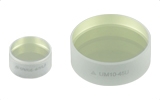 |
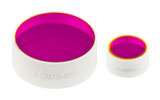 |
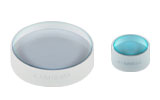 |
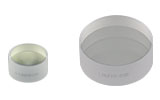 |
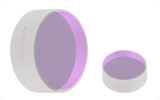 |
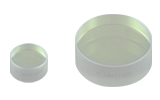 |
| 355 - 445 nm | 460 - 590 nm | 700 - 930 nm | 970 - 1150 nm | 1400 - 1700 nm | 1760 - 2250 nm |
| Dielectric Mirror | High-Power Mirrors for Picosecond Lasers |
Metallic Mirrors | Low-GDD Pump-Through Mirrors |
||
|---|---|---|---|---|---|
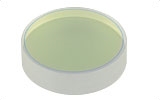 |
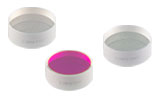 |
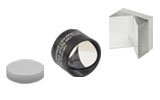 |
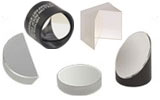 |
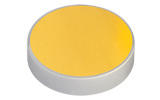 |
 |
| Dual-Band Dielectric Mirror, 400 nm and 800 nm |
Ytterbium Laser Line Mirrors, 250 nm - 1080 nm |
Ultrafast-Enhanced Silver Mirrors, 750 - 1000 nm |
Protected Silver Mirrors, 450 nm - 20 µm |
Unprotected Gold Mirrors, 800 nm - 20 µm |
Pump-Through Mirrors, 1030 - 1080 nm and 940 - 980 nm |
| Deterministic GDD Beamsplitters |
Low-GDD Harmonic Beamsplitters |
Low-GDD Polarizing Beamsplitters |
β-BBO Crystals | Dispersion-Compensating Optics | |
|---|---|---|---|---|---|
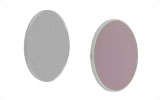 |
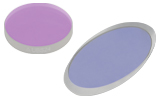 |
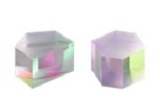 |
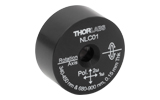 |
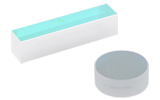 |
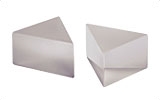 |
| Beamsplitters & Windows, 600 - 1500 nm or 1000 - 2000 nm |
Harmonic Beamsplitters, 400 nm and 800 nm or 500 nm and 1000 nm |
High-Power, Broadband, High Extinction Ratio Polarizers, 700 - 1300 nm | β-BBO Crystals for Second Harmonic Generation |
Dispersion-Compensating Mirrors, 650 - 1050 nm |
Dispersion-Compensating Prisms, 700 - 900 nm |

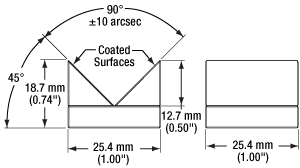
Click to Enlarge
Mechanical Drawing of the HRS1015 Hollow Roof Prism Mirrors
- 1.00" x 1.00" (25.4 mm x 25.4 mm) Substrate Dimension
- Six Coatings Available:
- UV Enhanced Aluminum: 250 nm - 450 nm
- Protected Aluminum: 450 nm - 20 µm
- Protected Silver: 450 nm - 20 µm
- Ultrafast-Enhanced Silver: 750 nm - 1 µm
- Protected Gold: 800 nm - 20 µm
- Unprotected Gold: 800 nm - 20 µm
- Clear Aperture >80% of Face Dimensions
- UV Fused Silica Substrate
Thorlabs offers square hollow roof prism mirrors with six different metallic coatings, allowing these prisms to be used in multiple applications, depending on the wavelength. These unmounted prisms allow for simple positioning within an optical system, and can be mounted using a kinematic platform mount and clamping arm.
Ultrafast-Enhanced Silver Coating
Thorlabs' Ultrafast-Enhanced Silver Mirrors are designed for applications in the fundamental wavelength range of femtosecond Ti:Sapphire lasers. These mirrors are manufactured with a dielectric overcoat that provides >98.5% absolute reflectance over the 750 - 1000 nm wavelength range, and they largely retain the low group delay dispersion (GDD) intrinsic to metallic coatings (see the Specs and Graphs tab for details). For Thorlabs' full selection of optics for ultrafast applications, please see the Ultrafast Optics tab. For a detailed comparison of our coatings designed for the Ti:Sapphire wavelength range, please see our Mirror Comparison tab here.
Silver coated mirrors require additional care due to their susceptibility to damage from environmental conditions and improper handling. Fingerprints, contact with abrasive surfaces, and environments with high humidity or temperature will diminish the effectiveness of the protective overcoat leaving the silver coating susceptible to oxidation and degradation. When working with silver mirrors, follow standard practices for handling optics. Latex gloves or similar protective coverings are recommended to prevent oil and other residues on the user’s fingers from reaching the optical surface. Even with such precautions, care should be taken not to touch the mirrored face or edges. Silver mirrors should be used and stored in areas at room temperature with minimal humidity. For information on how to clean mirrors and other optics, visit our Optic Cleaning Tutorial.
Unprotected Gold Coating
Unprotected gold offers higher reflectance than protected gold, but is more delicate. The unprotected gold is ideal for use in applications where the polarization state needs to be strictly maintained or to prevent dispersion due to the overcoat of protected gold mirrors. The overcoat of protected gold mirrors results in polarization changes that can be difficult to quantify and sometimes absorbs in the mid-to-far IR.
The gold layer on unprotected mirrors does not include a protective overcoat. Bare gold does not oxidize in air, but can be easily damaged by fingerprints, aerosols, or the slightest contact with any abrasive material. Unprotected gold mirrors should only be handled when necessary and always held by the sides. Latex gloves or a similar protective covering should be worn to prevent oil from fingers from reaching the surface. No attempt should be made to clean the surface other than blowing off dust with clean, dry air or nitrogen. Any other cleaning method may damage the surface.

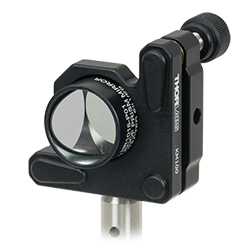
Click to Enlarge
The HR1015-P01 mounted with the KM100 Mirror Mount.
Unthreaded 1" Outer Diameter for Mounting Inside a Ø1" Lens Tube - Five Coatings Available:
- UV Enhanced Aluminum: 250 nm - 450 nm
- Protected Aluminum: 450 nm - 20 µm
- Protected Silver: 450 nm - 20 µm
- Ultrafast-Enhanced Silver: 750 nm - 1 µm
- Protected Gold: 800 nm - 20 µm
- >Ø18.0 mm Clear Aperture
- UV Fused Silica Substrate
Thorlabs offers mounted, round hollow roof prism mirrors with five different metallic coatings, allowing these prisms to be used in multiple applications, depending on the wavelength. These mirrors are premounted in a Ø1" unthreaded aluminum housing and can be mounted into Ø1" optical mounts or a threaded SM1 (1.035"-40) lens tube with the use of SM1RR retaining rings. Once mounted within a lens tube, the prism mirror can be integrated into internally SM1-threaded mounts, such as a Ø1" kinematic rotation mount. This mounting flexibility allows for precise and repeatable positioning of the mirror into optical systems.
The housing of each mirror is engraved with the item number and coating type. The housing also provides protection by limiting the direct handling of the optic, decreasing the likelihood of introducing imperfections and contaminants to the mirror.
Ultrafast-Enhanced Silver Coating
Thorlabs' Ultrafast-Enhanced Silver Mirrors are designed for applications in the fundamental wavelength range of femtosecond Ti:Sapphire lasers. These mirrors are manufactured with a dielectric overcoat that provides >98.5% absolute reflectance over the 750 - 1000 nm wavelength range, and they largely retain the low group delay dispersion (GDD) intrinsic to metallic coatings (see the Specs and Graphs tab for details). For Thorlabs' full selection of optics for ultrafast applications, please see the Ultrafast Optics tab. For a detailed comparison of our coatings designed for the Ti:Sapphire wavelength range, please see our Mirror Comparison tab here.
Silver coated mirrors require additional care due to their susceptibility to damage from environmental conditions and improper handling. Fingerprints, contact with abrasive surfaces, and environments with high humidity or temperature will diminish the effectiveness of the protective overcoat leaving the silver coating susceptible to oxidation and degradation. When working with silver mirrors, follow standard practices for handling optics. Latex gloves or similar protective coverings are recommended to prevent oil and other residues on the user’s fingers from reaching the optical surface. Even with such precautions, care should be taken not to touch the mirrored face or edges. Silver mirrors should be used and stored in areas at room temperature with minimal humidity. For information on how to clean mirrors and other optics, visit our Optic Cleaning Tutorial.
 Products Home
Products Home















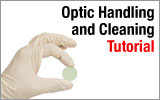
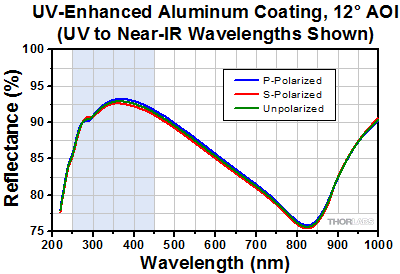
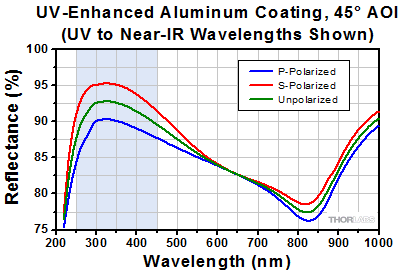
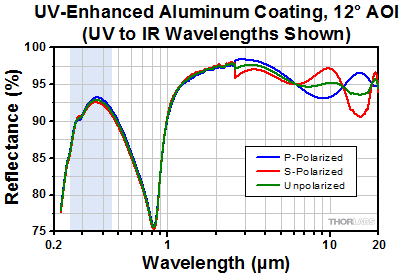
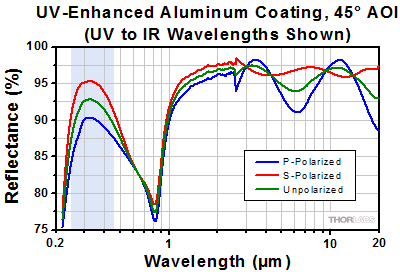
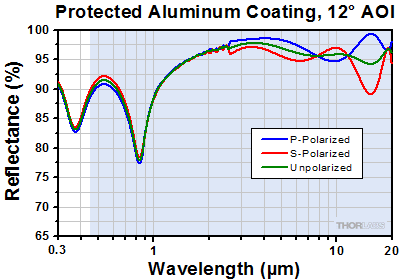
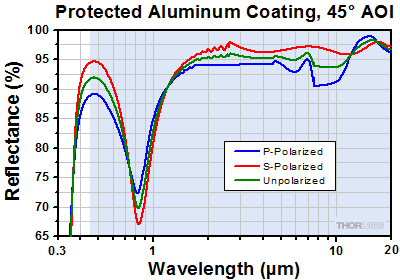
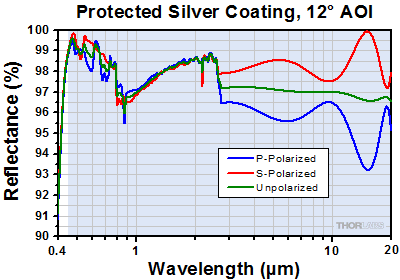
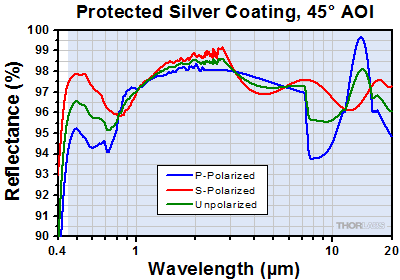
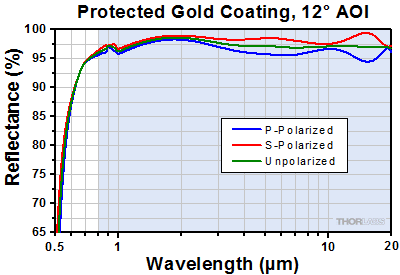
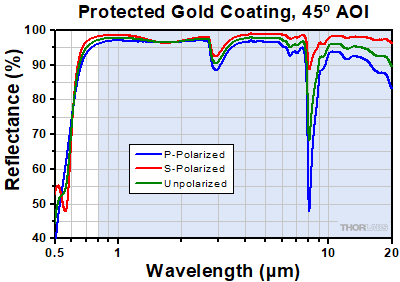
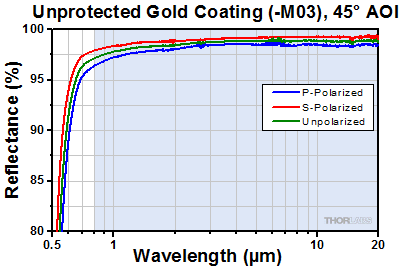

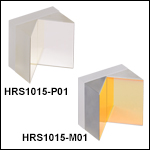
 Zoom
Zoom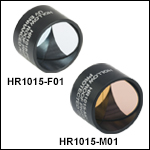
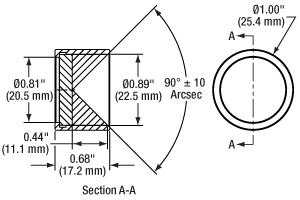
 Retroreflecting Hollow Roof Mirrors
Retroreflecting Hollow Roof Mirrors